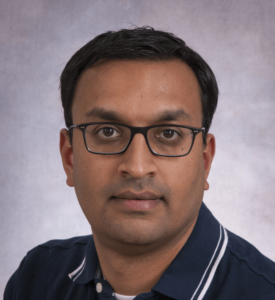Dr. Vijay Ramaswamy – Research Grant – 2017
Dr. Vijay Ramaswamy, Assistant Professor, Haematology/Oncology, Programme in Neuroscience and Mental Health, Hospital for Sick Children
Project title: “Mechanisms of treatment resistance in supratentorial ependymoma”
(Read the full project report here)
Project Summary
 Ependymoma is the third most common brain tumour of childhood and can occur anywhere in the brain and spinal cord. A major challenge in neuro-oncology is supratentorial ependymoma which arises in the hemispheres of the brain. Treatment currently consists of surgery and radiation, in children as young as 1 year.
Ependymoma is the third most common brain tumour of childhood and can occur anywhere in the brain and spinal cord. A major challenge in neuro-oncology is supratentorial ependymoma which arises in the hemispheres of the brain. Treatment currently consists of surgery and radiation, in children as young as 1 year.
Despite such aggressive therapy, many children still relapse and succumb to their tumour. Moreover survivors are left with lifelong disabilities and are frequently unable to live independent lives due to the effects of radiation on the developing brain. As such, new and novel treatments are urgently required.
This proposal seeks to bridge this gap by understanding why some supratentorial ependymoma’s are resistant to radiation and fail therapy. This will be done by studying the differences in supratentorial ependymoma from both diagnosis and after treatment failure, with the goal of identifying drugs that can be used to target the cause of treatment failure.
These drugs will be combined with radiation to determine if we can make radiation more effective, and even lower its dose. A potential result of this study is to help identify new treatment avenues to improve both survival and quality of life in children with supratentorial ependymoma.
Project Update
Pairs of recurrent supratentorial ependymoma, and cases of recurrent supratentorial ependymoma have been identified (total of 38 samples), and DNA/RNA extracted using the Qiagen All-Prep DNA/RNA/miRNA kit. Samples have been analysed by Bioanalyzer, and are currently undergoing library preparation for sequencing. So far 8 libraries have been constructed, and 4 libraries have undergone RNA sequencing. The initial analysis of the 4 libraries has shown excellent coverage, and the presence of the canonical RELA fusion. The library preparation was done using the ribodeplete method to ensure that non-PolyA transcripts are also captured. The quality control metrics of these initial samples is excellent, and the additional samples are currently undergoing library prep and sequencing. Immune signatures are currently being deconvoluted from the data, and the analysis will be extended to the entire dataset once the sequencing of all samples is complete.
Final Update – June 2021
Pairs of recurrent supratentorial ependymoma, and cases of recurrent supratentorial ependymoma were identified and sequenced using ribo-deplete RNA-sequencing. Additional funds were leveraged using the preliminary sequencing generated by Brain Tumour Foundation of Canada, and we have sequenced a total of 114 supratentorial ependymoma and 10 posterior fossa ependymoma. We have identified that childhood ependymoma is far more heterogeneous that previously thought, where we have identified many additional fusions of chromosome 11 which do not involve the canonical fusions in RELA. Specifically, 15 per cent of supratentorial ependymoma have alternate fusions suggesting that a one size fits all approach will not be appropriate for this group of patients. After completion of the granting period, we were able to leverage additional funds to perform high throughput drug screening of models of RELA and non-RELA ependymoma, and we have identified several compounds which are only active in specific models. These fusions are conserved at recurrence suggesting they are driver events. This is currently being prepared for publication and will be provided to Brain Tumour Foundation of Canada upon publication. We have also identified recurrent cases where we have identified additional alterations present only at relapse, include some samples with multiple relapses which are highly divergent post therapy. We also recently identified an ultra high-risk group of ependymoma harbouring gains of chromosome 1q and loss of chromosome 6q which was recently published in Neuro-Oncology (IF 10.4 – see attached). This has changed the landscape of ependymoma and is being incorporated into the next generation of trials. Funds from Brain Tumour Foundation of Canada have allowed me to leverage additional funds from the Canadian Cancer Society, specifically an emerging scholar award of $600,000 x 5 years.